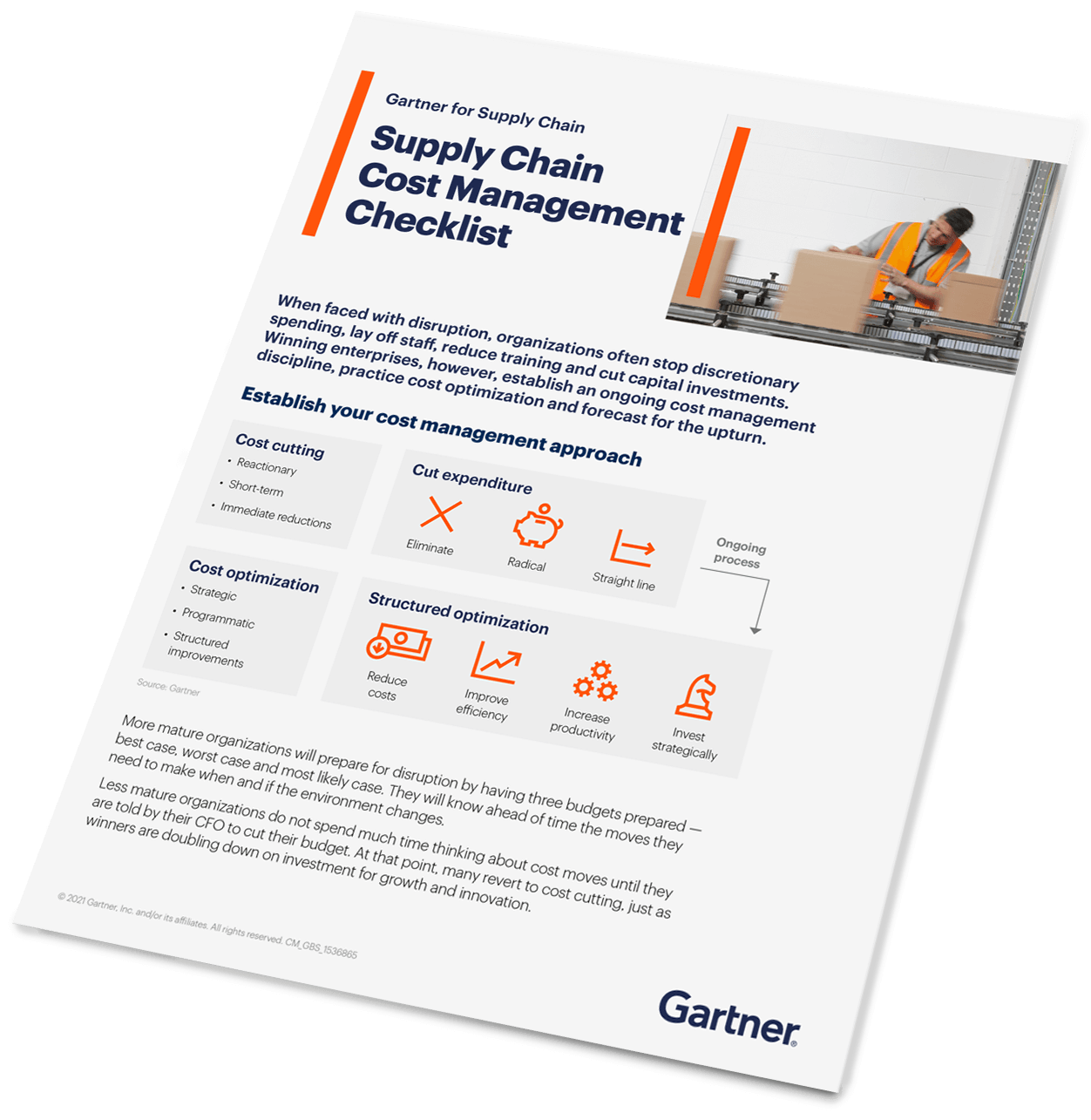When faced with disruption, organizations often stop discretionary spending, lay off staff, reduce training and cut capital investments.
Winning enterprises, however, establish an ongoing cost management discipline, practice cost optimization and forecast for the upturn.
To position the organization for long-term success, supply chain leaders must protect innovation funding. Take the five actions on this checklist to manage supply chain costs efficiently while also driving innovation.
